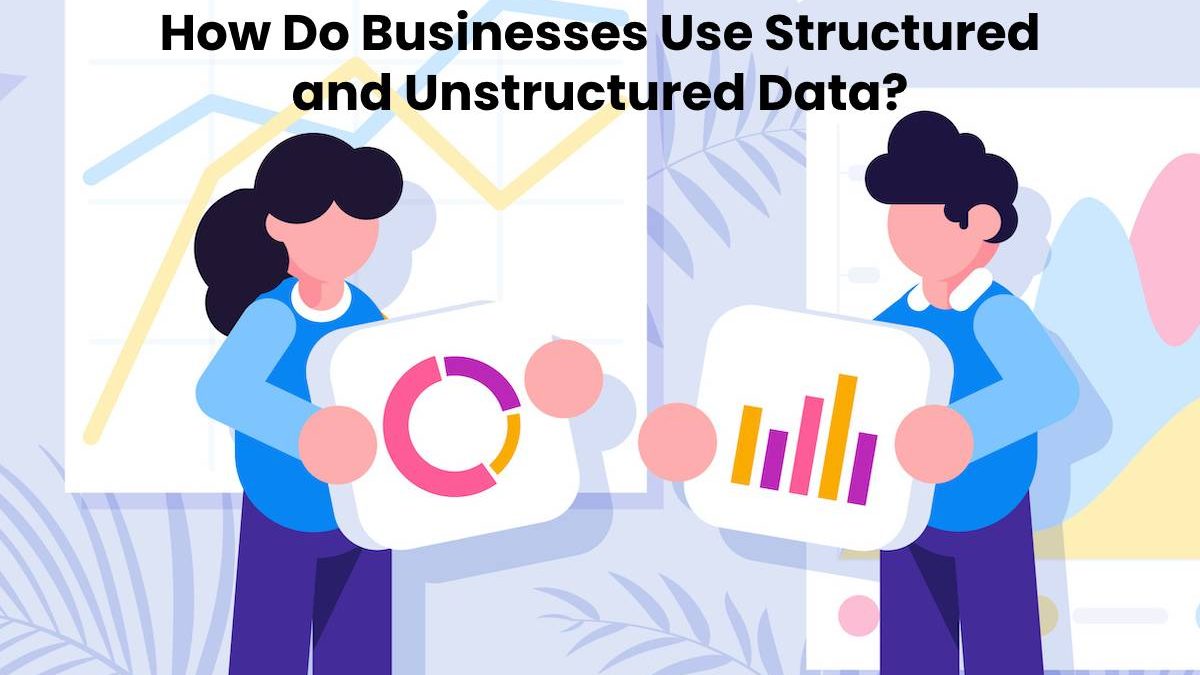Currently, data is the backbone of businesses. Employees in all departments increasingly use data to understand and predict trends, identify opportunities, and streamline job opportunities. However, unlike before, businesses currently have mounting volumes of data that can be used to understand customer patterns and make informed decisions.
However, the rapidly increasing amount of data, typically called big data, makes it challenging for businesses to handle and extract beneficial insights. Besides, most of this data is available in different types and formats. Most people often think of data as gathered information in a database or structured data.
However, only 20% of the collected data is structured data. Currently, businesses are increasingly looking to take advantage of unstructured data for better insights. Differentiating structured and unstructured data and understanding how both can help your business is crucial.
Table of Contents
What is Structured Data?
Structured data refers to data that has been formatted and predefined to an identified structure before storage. Traditionally, structured data was machine-generated to fit formats, like a table, to ease analysis. Typical examples of structured data types include SQL databases and Excel files outlining phone numbers, inventory information, and financial transactions.
These data types have labeled rows and columns, making it easy to aggregate and decipher insights. Most transactional or financial data used by businesses are structured and normalized. Therefore, businesses rely on this data type for decision-making. However, structured data has a lot of restrictions, especially for businesses looking to integrate business intelligence tools, such as AI and ML.
What is Unstructured Data?
Unstructured data is growing by 55 to 65% every year. Unlike structured data, unstructured data can’t be stored in a traditional spreadsheet or column-row database, such as MS Excel tables. Therefore, analyzing and interpreting this data type is difficult. The difficulties of handling unstructured data is why organizations ignored this data type.
However, the inception of data analytic tools driven by artificial intelligence has changed this perception. Common examples of unstructured data include text files, emails, photos, social media sites, presentations, video files, open-ended survey responses, and call center recordings or transcripts.
How Can Businesses Benefit from Structured and Unstructured Data?
Businesses have started appreciating the benefits of data analysis software to make informed decisions. Adopting a data-driven decision-making culture gives businesses a competitive advantage. It empowers leaders to identify business opportunities beforehand, improve customer service, create compelling products/services, and boost marketing campaigns.
While companies traditionally embraced structured data through Excel and other models, this data type offers minimal information on business customers and their purchase habits. As technology advances, businesses can now leverage business intelligence tools, such as Tableau, Microsoft Power BI, and Qlik, to analyze structured and unstructured data and generate meaningful insights.
While data analysts haven’t normalized using unstructured data, capabilities, natural language processing, and other technological capabilities can transition unstructured data into recognizable formats that businesses intelligence tools can recognize and analyze. BI tools can then use ML and AI to identify patterns and eliminate irrelevant data. These tools also prevent data loss, providing a point of reference in the future.
With artificial intelligence and machine learning capabilities, businesses can generate actionable insights from comprehensive unstructured data and structured data sets. Instead of focusing on retroactive data to predict future trends, business intelligence tools with artificial intelligence features use predictive analytics. This helps businesses make effective business decisions and identify new profitable opportunities.
The Bottom Line
Initially, business leaders relied on their experience to make business decisions and choose directions. However, without analyzing performance using data, leaders can’t know if their business decisions are effective until revenue figures improve or drop.
However, using structured and unstructured data eliminates the guesswork. BI technology also enables business leaders to identify what’s working and what’s not proactively.

